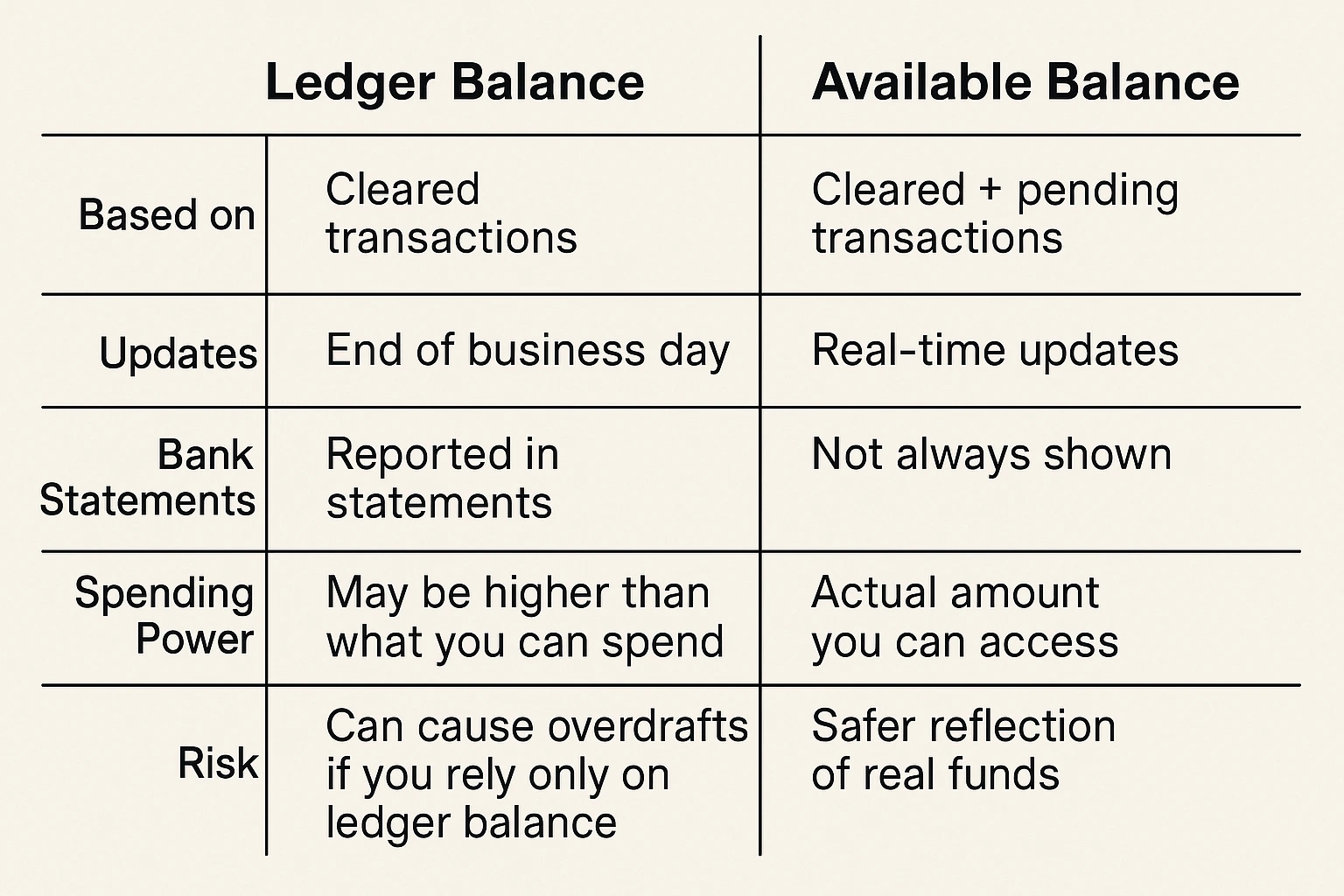Ledger Balance vs Available Balance
Aug 29, 2025Book a demo with one of our experts!
- Get a guided tour
- Let's do the setup together
- 100% Free
When you check your bank account or reconcile financial records, you may notice two terms: ledger balance and available balance. At first glance, they might look the same, but they represent different aspects of your funds. For business owners and accountants, understanding the difference between the two is crucial for accurate financial planning, cash flow management, and bookkeeping.
In this guide, we’ll break down what each term means, the differences between them, and why it matters for businesses using QuickBooks and integrated solutions like QBIS Sync.
What is Ledger Balance?
The ledger balance (also called the “current balance”) is the official balance in your bank account at the end of the previous business day.
- It reflects all settled transactions (deposits, withdrawals, payments) that have been cleared by the bank.
- Pending transactions are not included until they are fully processed.
- This is the balance your bank reports in official statements.
What is Available Balance?
The available balance is the amount you can actually spend or withdraw from your account at any given time.
- It includes the ledger balance plus/minus pending transactions.
- Deposits that are still on hold or pending payments may reduce/increase it.
- It’s the real-time reflection of what funds are accessible.
Ledger Balance vs Available Balance – The Key Differences

Ledger Balance vs Available Balance
Why Businesses Must Understand the Difference
For businesses, especially eCommerce and retail, not knowing the difference can create financial issues:
- Overdraft Risk: Spending based on ledger balance may cause overdrafts if pending payments haven’t cleared.
- Cash Flow Mismanagement: Overestimating available funds can disrupt operations.
- Bookkeeping Errors: Incorrectly recording balances leads to reconciliation mismatches.
- Tax & Compliance Issues: Financial reports may become inaccurate.
Ledger vs Available Balance in QuickBooks
QuickBooks automatically records transactions, but depending on your bank feed, you may see timing differences between ledger and available balances.
- Ledger Balance in QuickBooks → Reflects cleared transactions synced from the bank.
- Available Balance in QuickBooks → Updates when pending transactions are posted.
This difference often causes confusion during reconciliation, especially for businesses handling multiple payment sources like Shopify, PayPal, or POS systems.
How QBIS Integration Helps
With QBIS QuickBooks Integration, your eCommerce and POS transactions sync automatically into QuickBooks. This ensures:
- Accurate reflection of both ledger and available balances.
- Reduced manual errors when recording pending vs cleared transactions.
- Real-time cash flow visibility for smarter decisions.
- Easy reconciliation across multiple sales channels (Shopify, Amazon, Stripe, Toast, etc.).
Final Thoughts
Understanding ledger balance vs available balance is critical for managing cash flow, avoiding overdrafts, and keeping financial records accurate. For businesses, this difference can directly affect growth and stability.
By integrating QuickBooks with QBIS, you can automatically sync sales, payments, and fees, giving you complete clarity on your true available funds while maintaining accurate ledger records.
Ready to eliminate bookkeeping errors and get real-time financial insights? Contact QBIS today for seamless QuickBooks integrations.
FAQs
Q1. Which is more important: ledger balance or available balance?
Available balance is more important for day-to-day spending, but ledger balance is crucial for official financial reporting.
Q2. Why is my available balance lower than my ledger balance?
This usually happens because of pending payments, holds, or bank processing delays.
Q3. Does QuickBooks show ledger or available balance?
QuickBooks generally shows ledger balance from bank feeds, but updated available balance appears once transactions are cleared.
Q4. Can pending transactions affect bookkeeping?
Yes. If not tracked properly, pending transactions can create reconciliation errors in QuickBooks.
Q5. How does QBIS help with ledger vs available balance?
QBIS syncs transactions automatically, keeping both balances aligned in QuickBooks for accurate financial management.

